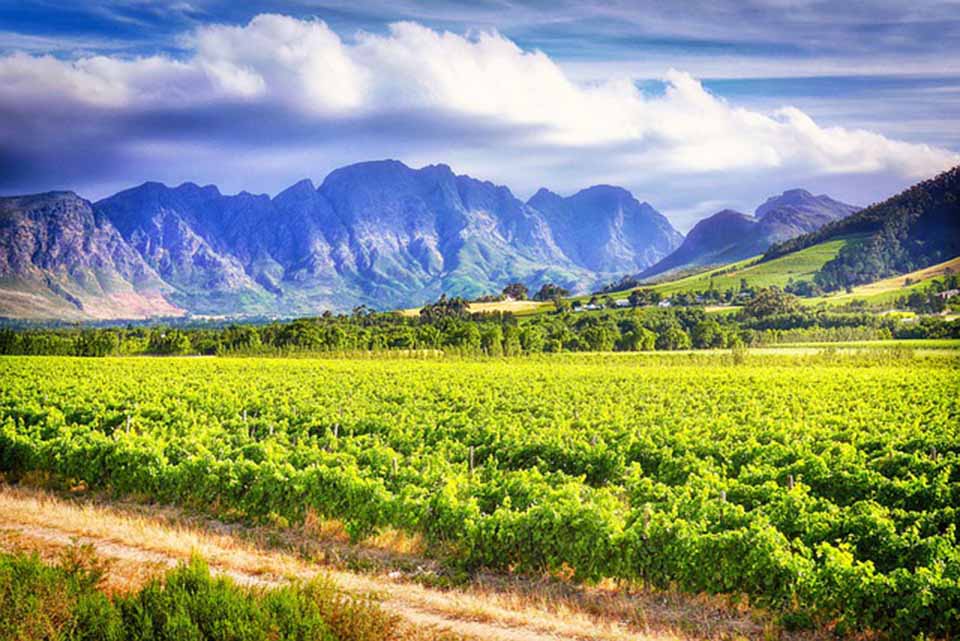[ad_1]

You might have observed commercials for a brand new native wine outlet referred to as Vines to Vino. A few weeks in the past, I referred to as in at their store (open 11:00-14:00 besides Mondays) which is subsequent door to the Pattaya Mail places of work. It’s that soi that runs parallel to Thepprasit Street simply up from what the locals name Soi Daeng-Dum. The proprietor and supervisor of Vines to Vino is a nice and affable New Zealander referred to as Raymond Whitley whose firm provides a collection of over 5 hundred wines. I used to be happy to see a number of French wines in inventory, together with some examples from Bordeaux and Beaujolais and a very good Gewürztraminer from Alsace. However Raymond was anxious that I attempt a Pinotage from Rhanleigh Wines of South Africa.
Until you’re accustomed to South African wine, you may not recognise the title Pinotage, the nation’s signature grape. The grape was created (sure, created) in 1925 by Professor Abraham Izak Perold, a scientist who was the Professor of Viticulture on the College of Stellenbosch. He’d observed that Pinot Noir grapes struggled within the scorching native local weather and felt that by crossing it with a hardier selection would possibly resolve the issue. The Pinot was crossed with the heat-tolerant Cinsault (SAN-soh) grape from southern France. The grape was often called Hermitage in South Africa and the brand new selection, which turned out to be an blue-black color, was given the portmanteau title Pinotage (pee-noh-TAHJ).
You could be shocked to know that a number of grape varieties are crosses, hybrids or clones. We don’t have to attempt to unravel the variations between them as a result of it will get a bit technical and I can sense your eyes glazing over already. The essential factor is that these human-made varieties are bred with particular intentions equivalent to immunity to winery pests and illness or to enhance flavour, color or grape yield. The College of California, Davis has already developed new disease-resistant varieties aimed to cut back the price of winery spraying or replanting. Local weather change too has pressured the event of latest varieties which might tolerate greater temperatures.
In a way, all grapes are crosses as a result of cross-pollination happens naturally within the winery, producing virtually equivalent clones of the identical selection. It was not till 1996 that DNA proof revealed that Cabernet Sauvignon, one of many world’s hottest grapes is the offspring of Cabernet Franc and Sauvignon Blanc – a pure likelihood crossing that occurred someday throughout the 17th century.
One of many earliest human successes at producing a brand new grape selection was the Müller-Thurgau, created in 1882. It’s a cross between Riesling and Madeleine Royale and right this moment it’s grown throughout Europe. In Germany it’s used to make Liebfraumilch and different undistinguished whites. The Scheurebe was created in Germany in 1916 by crossing Riesling and Bukettrebe in an try to supply a grape that might resist frost. And I mustn’t neglect the Austrian Zweigelt grape, created in 1922 by Friedrich Zweigelt who, with touching modesty named it after himself.
Though Pinotage thrived in South Africa’s sunny vineyards, making it into drinkable wine proved a problem. Partly because of this, it fell into oblivion for many years and wasn’t revived till the center of the 20th century. I nicely keep in mind tasting Pinotage within the Outdated Nation again within the Nineteen Seventies. It was a novelty on the time – a country and tannic pink that typically carried the faint aroma of nail polish remover or burnt rubber. However issues have moved on. A number of South African wineries at the moment are producing prime quality Pinotage, a few of which have distinctive aromas and flavours. Right here’s one in all them.
Rhanleigh Pinotage 2020 (pink), South Africa (Bt 499 + tax @ Vines to Vino)
Though its historical past might be traced again to 1659, it was not till the 20th century that South African wine achieved recognition. Rhanleigh Vineyard is within the hilly Western Cape Province, between the modest cities of Robertson and Ashton. The corporate produces a variety of standard varietals and this one is an inky darkish pink wine with bluish hints. The primary sniff would possibly remind you of Shiraz. After a bit extra nosing, you’ll discover fairly a posh aroma with brambles, gooseberries, a contact of pepper and black jammy fruit. There would possibly even even be a touch of ripe banana, however I’ll go away you to determine that for your self. I used to be anticipating a heavy, full bodied wine however that is pleasantly medium-bodied, with restrained sweetish fruit and a mouth-feel which is remarkably gentle and supple. It’s a nice, glugger with a satisfying dryness, light grainy tannins and a longish dry end. It advantages from a little bit of aeration and after fifteen minutes, the feel was noticeably softer. The label states that the alcohol content material is 14.5% ABV which is close to the highest of the tree for desk wines. To me it appeared fairly a bit greater, particularly after a few glasses. And naturally, wine can legally be as much as 1.5% greater than what the label claims.
Pinotage is an effective companion for dishes that function pink meat or sport. It could actually go nicely with kebabs, pork chops, burgers and strong-flavoured cheese, however its assertive nature overwhelms gentle and delicate dishes. Raymond talked about that that is one their best-selling wines. Not stunning actually, for it’s straightforward on the palate and certain to make many extra new associates.
[ad_2]
Source link








